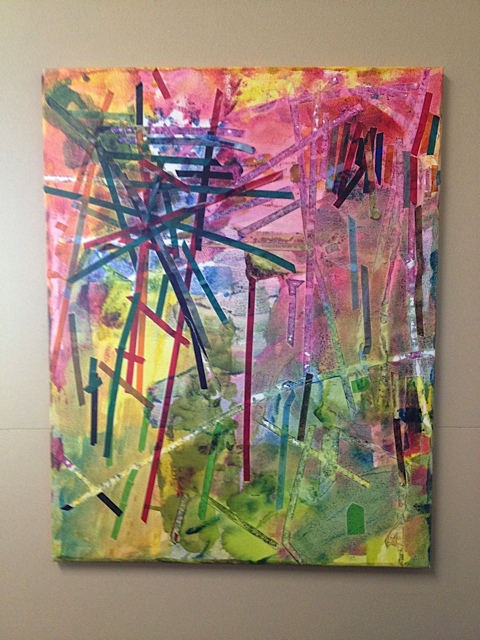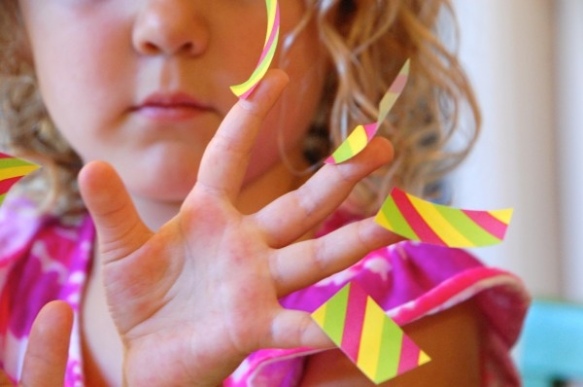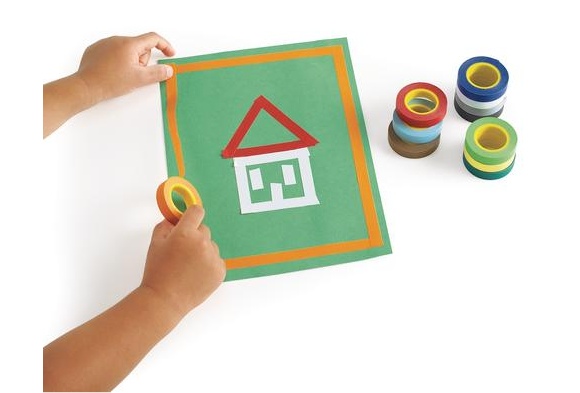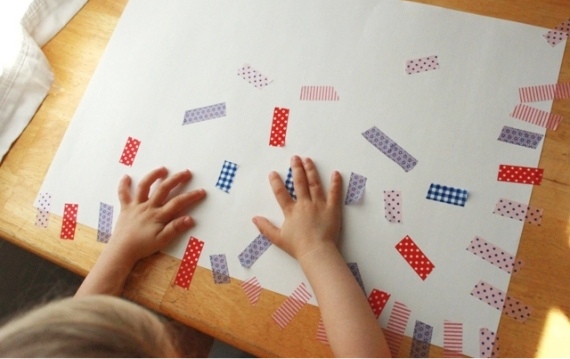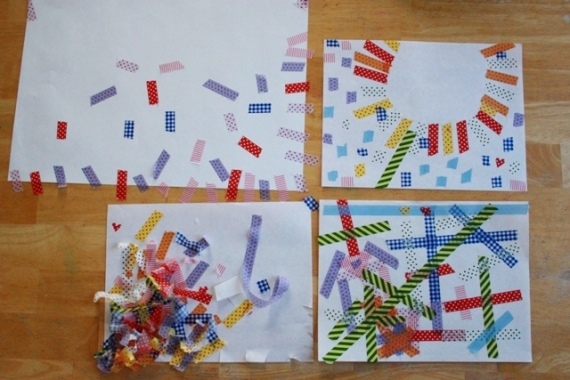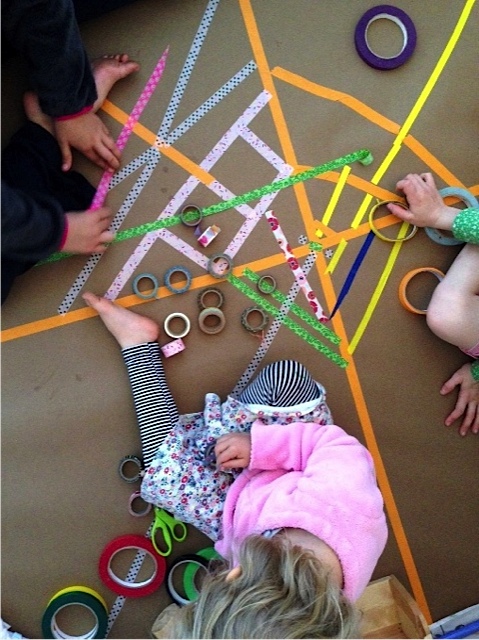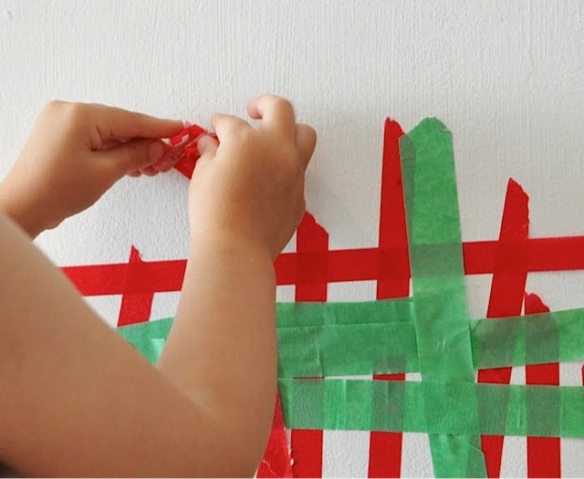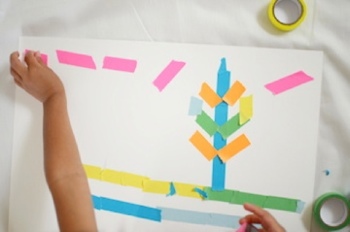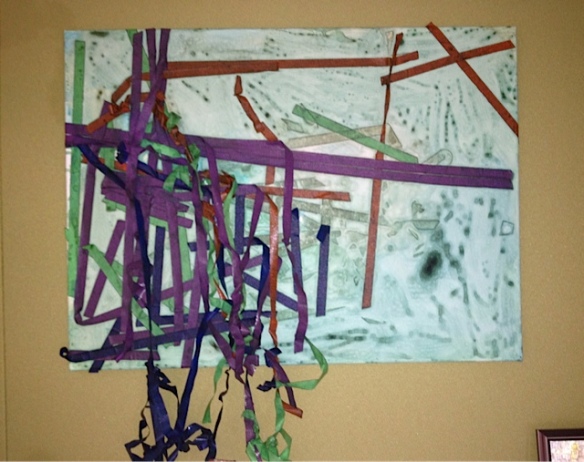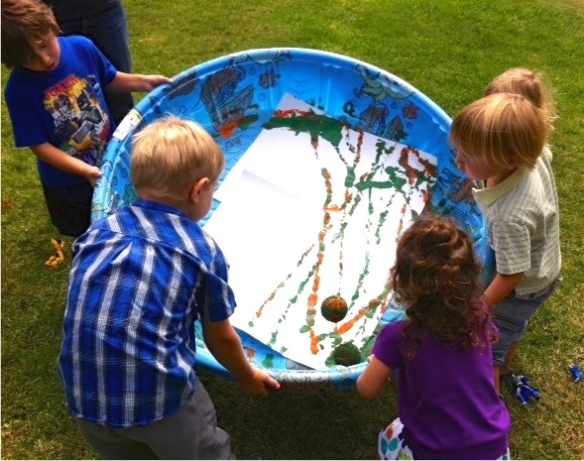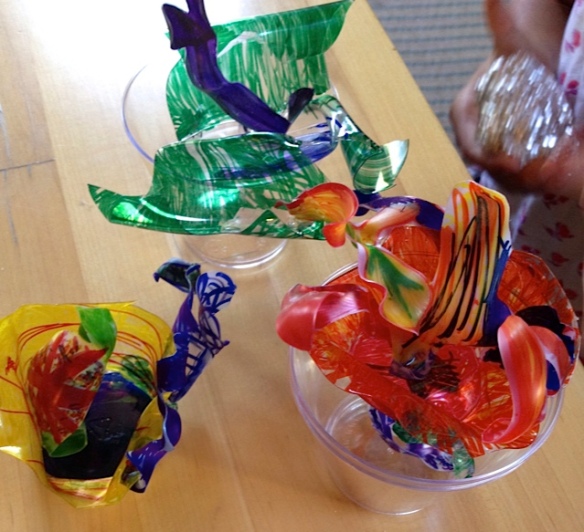 How do you encourage and preserve children’s natural creativity and belief in their own capacity?
How do you encourage and preserve children’s natural creativity and belief in their own capacity?
This week I had an “Artist Play Date” with 7 year old Nora, who taught me the shrink art techniques she learned at summer camp. Nora knows I am a big fan of Shrink-It-Sheets, so she was eager to show me her innovative and truly unique creations.
Nora had learned how to use clear shrink art plastic to make 3-D art abstractions in the style of glass sculptor, Dale Chihuly. Here’s Nora in my garage studio with some of the clear shrink-it sheets that she decorated with permanent markers and rubber stamps.
I love the combination of art, math and science that shrink art projects provide. It engages scientific inquiry, physical science and geometry, and includes active explorations of cause and effect, change of state, and mathematical reasoning. Not to mention that it’s colorful, creative and fun.
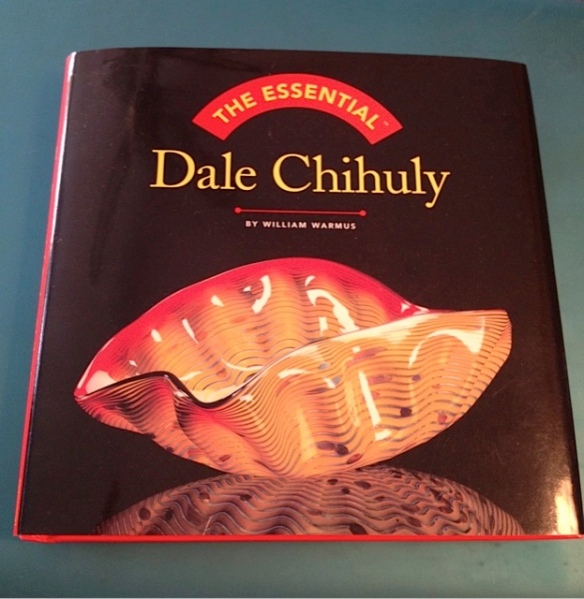

 The artist we were emulating is Dale Chihuly, a glass art sculptor known for his stunning and colorful organic shapes. Unlike the majority of glass artists whose work is functional and focuses on vessels and bowls, Chihuly’s glass work is pure abstract art. Children typically relate very well to his use of bright colors and shapes, and can easily be inspired by his style. People traveling to Las Vegas can see this stunning example of his work in the lobby of the Bellagio Hotel.
The artist we were emulating is Dale Chihuly, a glass art sculptor known for his stunning and colorful organic shapes. Unlike the majority of glass artists whose work is functional and focuses on vessels and bowls, Chihuly’s glass work is pure abstract art. Children typically relate very well to his use of bright colors and shapes, and can easily be inspired by his style. People traveling to Las Vegas can see this stunning example of his work in the lobby of the Bellagio Hotel.

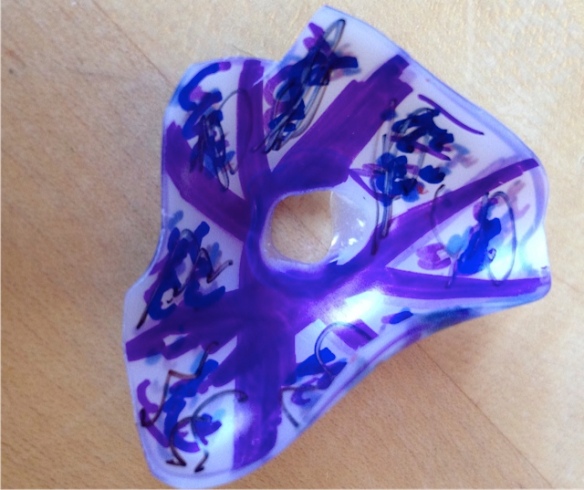 A close look at Nora’s shrink art sculpture shows off the same brilliant colors and organic shapes of Chihuly’s style, and this close up blue “pod” created from opaque shrink art plastic also reveals rich semi-transparent colors.
A close look at Nora’s shrink art sculpture shows off the same brilliant colors and organic shapes of Chihuly’s style, and this close up blue “pod” created from opaque shrink art plastic also reveals rich semi-transparent colors.
Here’s another example of opaque Shrink It Sheet cutouts, which we decorated with markers and rubber stamp impressions. They’re shown here in the oven, where we baked them for 3 minutes at 310 degrees. When they came out, Nora attached them together into this small sculpture using Twist and Bend Craft Ties. You can also a hot glue gun to attach baked pieces together, but twist ties add color and eliminate the stress of using hot glue.
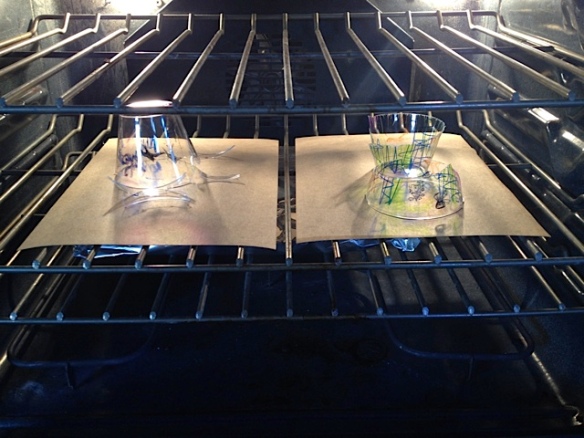
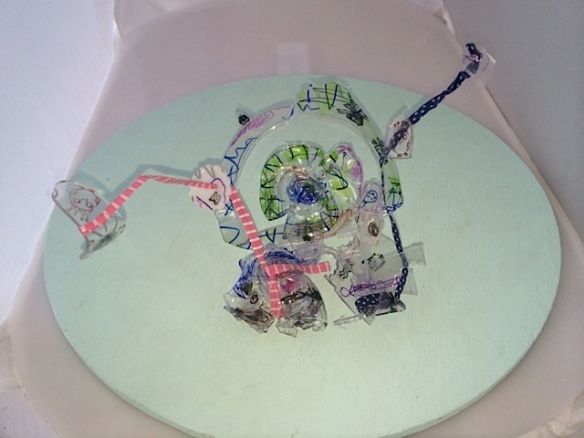 While the oven was warm, we also experimented with permanent markers and stamps on plastic cups. Here are the cups before and after baking. Again, Nora used Twist and Bend Craft Ties to connect baked parts together into one composition.
While the oven was warm, we also experimented with permanent markers and stamps on plastic cups. Here are the cups before and after baking. Again, Nora used Twist and Bend Craft Ties to connect baked parts together into one composition.
Just like with the Shrink-It-Sheets, we baked the colored plastic cups for 3 minutes in a 310-degree oven. Various brands of plastic cups have different properties, and oven temperatures also vary, so this part calls for experimentation (aka the scientific method at work). You can use a toaster oven in the classroom too, just keep the windows open for ventilation. It’s so dramatic to see how oven heat distorts, shrinks and flattens various thin plastics, causing designs to shrink and colors to intensify.

Thanks, Nora! I learned a lot from you and admire your curiosity. And while I’m kind of sad that summer break is coming to an end, I know a new school year of growth and discovery lies ahead for YOU and other children nationwide.
With the nationwide emphasis on STEM in education, there is no better time to combine art and science in creative ways like these to “fan the flame” of their natural curiosity. STEAM adds the ART to STEM and stands for science, technology, engineering, art and Mathematics. The goal of integrating STEAM practices into the classroom is to empower students to be problem-solvers and innovators, unafraid of failure and committed to figuring out open-ended challenges that mirror real world situations.
Nora probably didn’t think of her artist play date as a STEAM exercise, but she was smiling when she left and beaming with creative confidence in her discoveries and abilities.
As teachers and parents, we know children are born curious and creative, but too often the forced structure of formal schooling erodes their sense of wonder. I hope you consider incorporating more STEAM ideas into your classroom this year, and use them to facilitate wonder, curiosity and creative confidence.
Materials Used:
Clear Shrink-It-Sheets – 24 quantity (CSHRINK)
 Opaque Shrink-It-Sheets – 24 quantity (SHRINKIE)
Opaque Shrink-It-Sheets – 24 quantity (SHRINKIE)
 Sharpie® Ultra Fine Point Permanent Markers – set of 12 (ULTCLR)
Sharpie® Ultra Fine Point Permanent Markers – set of 12 (ULTCLR)
Sharpie® Multi-Colored Permanent Fine-Tip Markers – set of 12 (SHARPCLR)
Colorations® Color Permanent Markers – set of 12 (PERMCLR)
 Fun & Friendly Rubber Stamps – set of 25 (ADORABLE)
Fun & Friendly Rubber Stamps – set of 25 (ADORABLE)
 Twist and Bend Craft Ties Super Pack (TWISTY)
Twist and Bend Craft Ties Super Pack (TWISTY)
 * Brought to you by Discount School Supply®
* Brought to you by Discount School Supply®
* For more ideas, visit Art and Creativity in Early Childhood Education


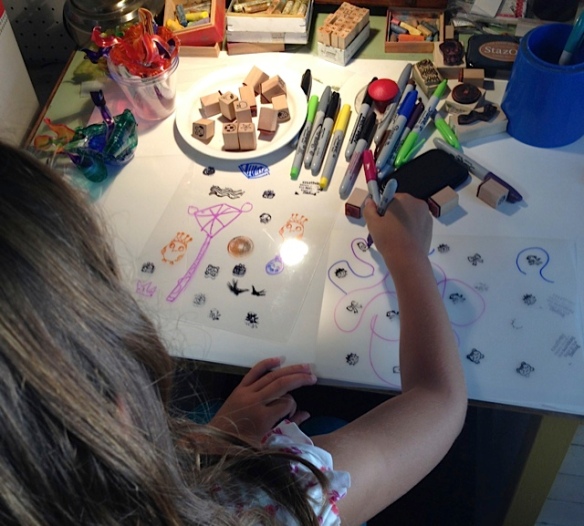


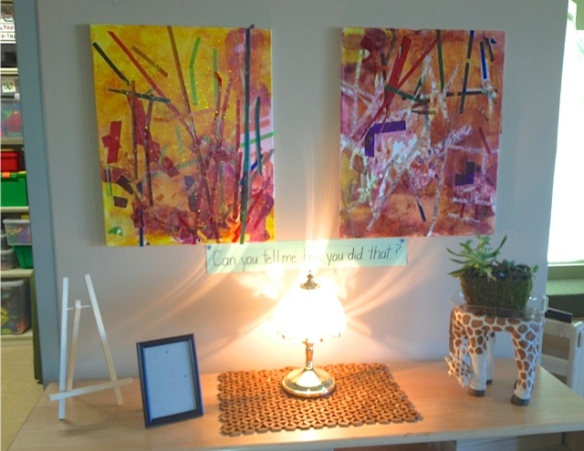 Colored craft tapes are exploding with bright colors, patterns and FUN this year, so it’s the perfect time to discover this newly expanded arts and crafts material. Catch onto this trend, and you’ll be amazed at some of the easy applications you’ll discover.
Colored craft tapes are exploding with bright colors, patterns and FUN this year, so it’s the perfect time to discover this newly expanded arts and crafts material. Catch onto this trend, and you’ll be amazed at some of the easy applications you’ll discover. 